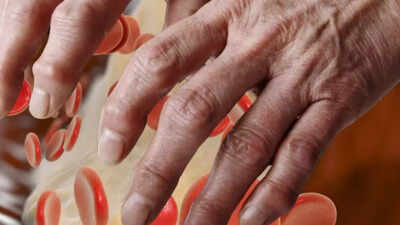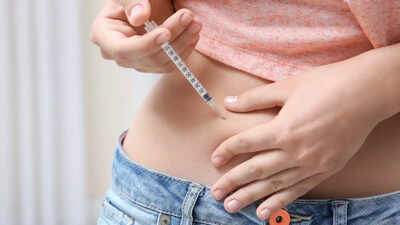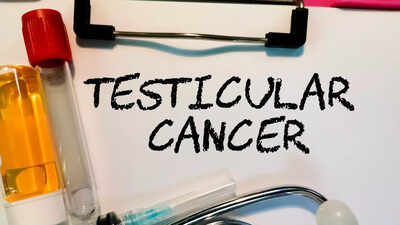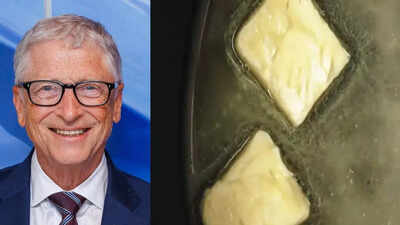High cholesterol symptoms in fourth and fifth fingers: Spot these early signs before it’s too late to protect your heart |

High cholesterol is a widespread but often unnoticed health issue, as it typically shows no symptoms until serious complications like heart attacks or strokes occur. While blood tests are the most reliable way to detect elevated cholesterol, some subtle physical signs can offer early clues. One such lesser-known indicator is Dupuytren’s contracture, a condition affecting the tendons of the fourth and fifth fingers. This causes the fingers to tighten and bend inward, limiting movement. Recognising this sign can prompt timely cholesterol screening and help prevent severe cardiovascular problems.
Understanding cholesterol in body and why does it matter
Cholesterol is a waxy, fat-like substance essential for normal body functions, including:
- Building healthy cell membranes
- Producing hormones like estrogen and testosterone
- Supporting vitamin D synthesis
Despite its importance, cholesterol can become harmful when present in excessive amounts in the bloodstream. It travels through the blood attached to proteins, forming lipoproteins. These are categorised mainly into:
- Low-Density Lipoprotein (LDL): Often referred to as “bad cholesterol,” LDL can accumulate inside the walls of arteries, leading to plaque formation, which narrows and hardens arteries — a condition called atherosclerosis. This raises the risk of heart disease and stroke.
- High-Density Lipoprotein (HDL): Known as “good cholesterol,” HDL helps remove excess cholesterol from the bloodstream by transporting it back to the liver for processing and elimination. Higher levels of HDL are protective for heart health.
Because high LDL cholesterol typically causes no immediate symptoms, many people remain unaware of their elevated risk until a serious cardiovascular event occurs.
High cholesterol shows hidden physical sign on your fingers
Among the few external clues to raised cholesterol is Dupuytren’s contracture, a condition affecting the tendons in the palm and fingers, particularly the fourth (ring) and fifth (little) fingers according to study published in Open Access Government.
- The tendons under the skin of the palm gradually thicken and tighten.
- This tightening pulls the affected fingers inward toward the palm.
- Over time, affected fingers lose the ability to straighten fully, resulting in permanent bending.
- This condition can interfere with everyday tasks such as gripping objects or shaking hands.
How is high cholesterol diagnosed

Since high cholesterol is usually symptomless, the most reliable way to identify it is through a simple blood test. This test measures your total cholesterol, LDL, HDL, and triglycerides (another type of fat in the blood). Based on these numbers, healthcare providers can assess your risk for cardiovascular disease and recommend appropriate interventions.
Why is Dupuytren’s Contracture linked to high cholesterol
Medical research and expert publications, including Open Access Government, have noted a correlation between Dupuytren’s contracture and elevated cholesterol levels. The exact cause isn’t fully understood, but the condition is more common in individuals who also have:
- Raised LDL cholesterol
- Smoking habits
- Alcohol overconsumption
- Diabetes
Recognizing Dupuytren’s contracture as a potential warning sign can encourage earlier cholesterol screening and preventive care.
Genetic and hormonal factors influencing cholesterol levels
Besides lifestyle, genetics play a role in cholesterol levels. Some people inherit genes that cause elevated levels of a specific type of blood fat called Lipoprotein(a), which also increases cardiovascular risk.Women going through perimenopause or menopause often experience hormonal shifts — notably a decrease in estrogen. Estrogen helps regulate cholesterol, so its decline can lead to increases in LDL and Lipoprotein(a) levels, elevating heart disease risk in this group.
Importance of regular cholesterol screening
Given that high cholesterol causes few or no symptoms, regular health checks are vital. In the UK, for example, adults aged 40 to 74 can receive free cholesterol screening every five years through the NHS Health Check programme. Early detection allows:
- Timely lifestyle interventions
- Initiation of medication if necessary (e.g., statins)
- Reduced risk of heart disease, stroke, and other complications
Managing high cholesterol: Lifestyle and medical approaches
Diet: Increasing fiber intake and reducing saturated/trans fats can help lower LDL levels. Including foods rich in healthy fats (like olive oil, nuts, and fatty fish) supports better cholesterol balance.Exercise: Regular physical activity raises HDL cholesterol and improves overall cardiovascular health.Avoid tobacco and limit alcohol: Smoking cessation and moderating alcohol consumption reduce risk factors associated with both cholesterol and Dupuytren’s contracture.If cholesterol remains high despite lifestyle changes, doctors may prescribe medications. These drugs may help to reduce LDL cholesterol effectively and lower the chances of heart attacks and strokes.Also Read | Your heart sends warnings 12 years before a heart attack; here’s the sign most people miss and preventions steps you need to know now





